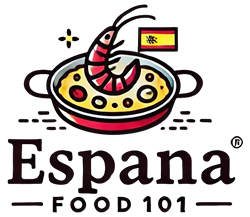The Spanish tortilla is one of the country’s most iconic dishes. Whether you’re wandering the bustling streets of Madrid or relaxing in a cozy café in Barcelona, you’ll likely come across this beloved egg-and-potato dish. But what many may not realize is that the Spanish tortilla, much like Spain itself, is diverse and varies greatly depending on the region you’re in. In this article, we’ll explore these regional variations of Spanish tortilla, diving deep into the unique twists and flavors that make this dish a staple across the country. From the traditional tortilla española to lesser-known versions, let’s look at what makes each version so special.
What is a Traditional Spanish Tortilla?
Before we delve into the regional preferences, it’s essential to understand the foundation of the Spanish tortilla. A classic tortilla española (or tortilla de patatas) consists of a simple blend of eggs, potatoes, and often onions. The potatoes are sliced thinly and slowly fried in olive oil until tender, then mixed with beaten eggs before being cooked into a thick, golden omelet. It’s hearty, satisfying, and surprisingly versatile. Though the basic ingredients are few, the technique can make all the difference, which is why variations based on location can be so fascinating.
What Makes Regional Tortilla Variations So Unique?
Spain’s rich culinary diversity stems from its geography, history, and cultural influences. Each region has its own way of preparing food, and the tortilla española is no exception. Some regions prefer their tortilla with onions, while others wouldn’t dare. There are areas where seafood or ham finds its way into the mix, and some prefer their tortilla to be runny, while others like it firm. These differences can be subtle or pronounced, but each one tells a story of local taste and tradition.
Does the Inclusion of Onions Stir Debate?
One of the most hotly debated topics in Spain revolves around the question: “With or without onions?” In some regions, like Madrid, onions are often included in the tortilla española, adding sweetness and depth. However, in other areas, such as Galicia, onions are strictly avoided. The regional split on this ingredient is so intense that it has even led to viral debates on social media.
Helpful Hint:
If you want to keep your tortilla tender, fry your potatoes slowly on low heat. This allows them to soften perfectly without browning too much.
Regional Variations of Spanish Tortilla
Andalusian Tortilla: A Touch of the South
Andalusia is known for its vibrant flavors and sun-kissed produce. Here, the tortilla often incorporates local vegetables like red peppers, zucchini, or spinach. This adds a fresh, earthy flavor that complements the creamy texture of the eggs and potatoes. Some Andalusian recipes also call for a dash of cumin or paprika, lending a subtle warmth that reflects the region’s Moorish influence.
Stats:
A survey conducted in Spain showed that 43% of Andalusians prefer their tortilla with additional vegetables, while 27% opt for the classic potato and egg combination.
Galician Tortilla: Keeping It Simple
Galicia, located in the northwest of Spain, is known for its simple yet hearty cuisine. When it comes to tortilla, the people of Galicia stick to the basics—just eggs and potatoes, without any onions or additional ingredients. The focus here is on achieving the perfect texture: firm but tender, with a golden, slightly crispy exterior. Galicians believe that adding onions or other vegetables detracts from the pure flavor of the potato, which is why their tortilla remains unadorned yet flavorful.
Why Do Basques Make Their Tortilla Runny?
In the Basque Country, the tortilla takes on a life of its own. Known for their bold approach to cooking, the Basques often serve their tortilla “poco hecha,” meaning undercooked or runny in the center. This version is an entirely different experience compared to the firm tortillas found in other regions. The slightly gooey interior creates a rich, custard-like texture that pairs perfectly with the crispy outer layer. Basques also add a variety of fillings such as green peppers, ham, or even cod, making it a versatile and deeply flavorful dish.
Helpful Hint:
When making a Basque-style tortilla, remove it from the heat when it’s still slightly liquid in the center. This will give you the classic runny texture Basques love.
Conclusion
As we’ve explored, the regional variations of Spanish tortilla reflect the rich and diverse culinary landscape of Spain. From the simplicity of Galician tortilla to the vegetable-packed Andalusian version, and the unique runny style of the Basque Country, there is no single way to enjoy this dish. Each region adds its own twist, making the Spanish tortilla a perfect representation of how geography and culture can shape even the most traditional of recipes.
Valencian Tortilla: Seafood Meets Tradition
Valencia is often synonymous with paella, but its take on the Spanish tortilla is equally interesting. In this coastal region, it’s not uncommon to see seafood making its way into the tortilla. Shrimp, cod, or even cuttlefish can be folded into the traditional egg-and-potato mixture, adding a briny depth that reflects the region’s rich maritime heritage. The Valencian tortilla is a celebration of local ingredients, combining land and sea in a way that feels natural and delicious.
This fusion is a great example of how regional ingredients can influence even the most classic dishes. Valencia’s proximity to the sea makes seafood an obvious addition, and the resulting dish is both hearty and light, perfect for a seaside lunch.
Why Do Some Prefer Adding Seafood?
Seafood adds a unique twist to the traditional tortilla, with its delicate flavors enhancing the richness of the eggs and potatoes. In coastal regions like Valencia, where fresh seafood is plentiful, this combination makes perfect sense. The seafood also brings a slight sweetness and a tender texture that contrasts nicely with the creamy potato and egg base. However, it’s a departure from the more traditional versions, and not everyone in Spain would agree with this addition.
Helpful Hint:
If you’re adding seafood to your tortilla, make sure it’s fresh and not overcooked. This helps retain the tenderness of the seafood, complementing the eggs and potatoes.
Catalan Tortilla: A Blend of Flavors
Catalonia is known for its love of bold and innovative flavors, and this extends to their version of the Spanish tortilla. In Catalonia, it’s common to add butifarra (a type of sausage) or escalivada (a dish of roasted eggplant and peppers) into the tortilla. The result is a smoky, savory dish that offers layers of flavor with each bite.
The Catalan tortilla often embraces both sweet and savory elements, with the roasted vegetables providing a caramelized sweetness and the butifarra adding a rich, meaty depth. The emphasis here is on balance, making it one of the most flavorful and complex versions of the tortilla you’ll find in Spain.
What Makes Catalan Tortilla Stand Out?
What sets the Catalan tortilla apart is its willingness to experiment with ingredients while still maintaining the integrity of the original dish. By incorporating local staples like butifarra and escalivada, the Catalan tortilla manages to feel both familiar and exciting. This regional twist reflects the spirit of Catalan cuisine, where tradition and innovation go hand in hand.
Regional Tortilla Preferences by Ingredients and Cooking Methods
| Region | Main Ingredients | Cooking Method | Texture |
|---|---|---|---|
| Basque Country | Eggs, potatoes, green peppers, cod (optional) | Runny center, undercooked (poco hecha) | Creamy, soft interior with crispy exterior |
| Galicia | Eggs, potatoes | Fully cooked, no onions | Firm texture, no additional fillings |
| Andalusia | Eggs, potatoes, red peppers, zucchini, spinach | Slow-cooked with added vegetables | Moist and slightly firm |
| Valencia | Eggs, potatoes, seafood (shrimp, cod, etc.) | Cooked with seafood and potatoes together | Fluffy with tender seafood chunks |
| Catalonia | Eggs, potatoes, butifarra (sausage), roasted vegetables | Cooked with sausage and vegetables | Smoky and rich |
Castilian Tortilla: A Hearty Classic
In the heart of Spain, the Castilian region stays true to the classic tortilla, with a focus on simple, hearty ingredients. However, what sets the Castilian tortilla apart is its size and thickness. Castilian tortillas are often much thicker than those found in other regions, making them ideal for sharing or serving as a meal in themselves.
These tortillas are typically firm and substantial, with a creamy interior that melts in your mouth. The simplicity of the Castilian version allows the natural flavors of the eggs and potatoes to shine, without any extra ingredients to distract from the main event.
Is Thicker Always Better?
The thick, dense nature of the Castilian tortilla has made it a favorite for those who prefer their meals on the heartier side. The firm outer layer combined with a soft, creamy center provides a perfect contrast in texture, creating a dish that is both comforting and satisfying.
How Does Each Region’s Tortilla Reflect Its Culture?
When you travel across Spain, you realize that food is much more than just sustenance—it’s a reflection of culture, history, and local pride. The regional variations of Spanish tortilla are a perfect example of how a single dish can be interpreted in many different ways, each version telling its own story. Whether it’s the addition of seafood in Valencia or the focus on vegetables in Andalusia, each tortilla reflects the ingredients, tastes, and traditions of the region it comes from.
Stats:
According to a study, 35% of Spaniards prefer the traditional potato and egg combination, while 65% enjoy variations with additional ingredients such as vegetables, meat, or seafood.
Helpful Tips for Making the Perfect Tortilla at Home
- Use the right pan: A non-stick, heavy-bottomed pan will give you the best results when making your tortilla. This helps ensure even cooking and prevents sticking.
- Don’t rush the potatoes: Slowly frying the potatoes on low heat is crucial. This allows them to soften without burning, ensuring a creamy texture inside your tortilla.
- Experiment with ingredients: While the classic tortilla is delicious, don’t be afraid to add your own twist. Try incorporating local ingredients or adding vegetables and meats to create your own regional variation.
FAQs
Wrapping Up
The regional variations of Spanish tortilla are a testament to Spain’s rich culinary traditions. Whether it’s the seafood-infused versions from Valencia or the vegetable-packed tortillas from Andalusia, each regional take on the dish offers something unique. No matter how you prefer your Spanish tortilla, this versatile and beloved dish continues to be a staple of Spanish cuisine. The joy of discovering these variations lies not only in the different ingredients but in how they reflect the local cultures and flavors. So whether you’re experimenting in your own kitchen or exploring Spain’s food trails, keep an eye out for the subtle but fascinating ways this simple dish is prepared across the country.
If you’ve never tried making your own Spanish tortilla, now is the time to explore these regional preferences and create your perfect version. With just a few ingredients, you can bring the flavors of Spain into your home kitchen.







